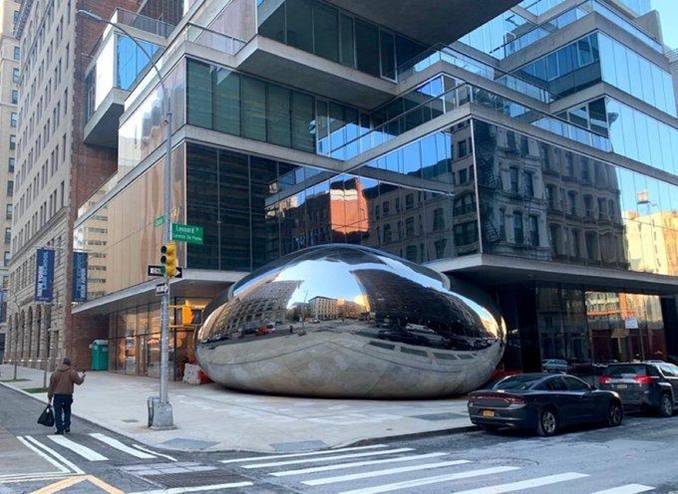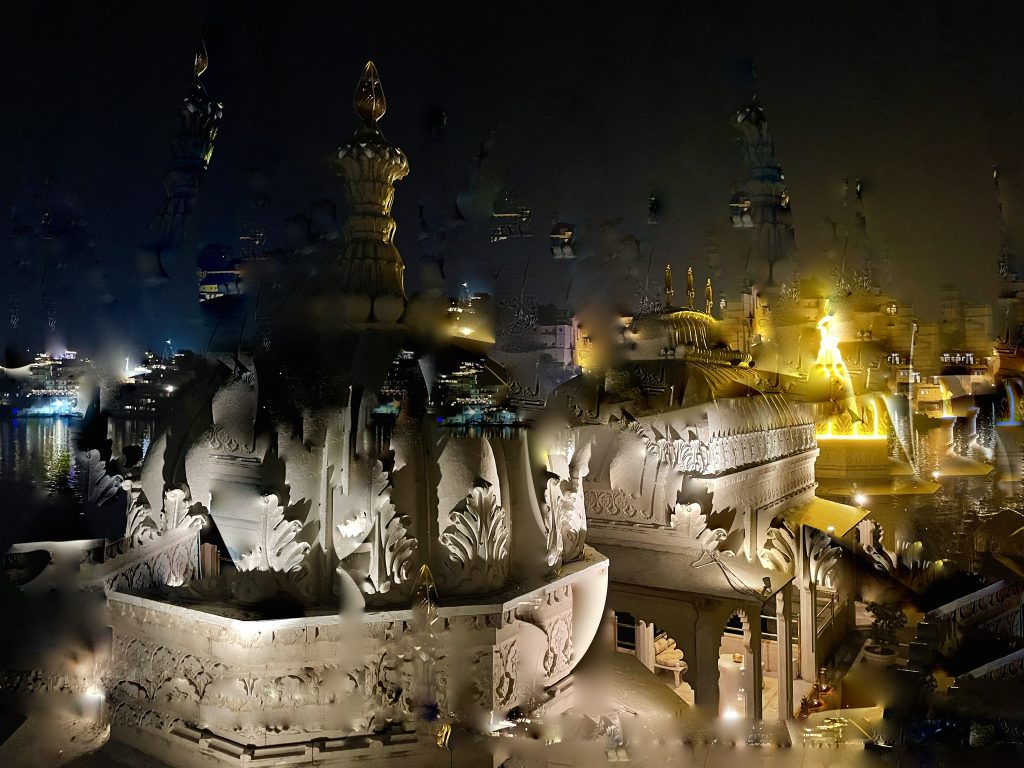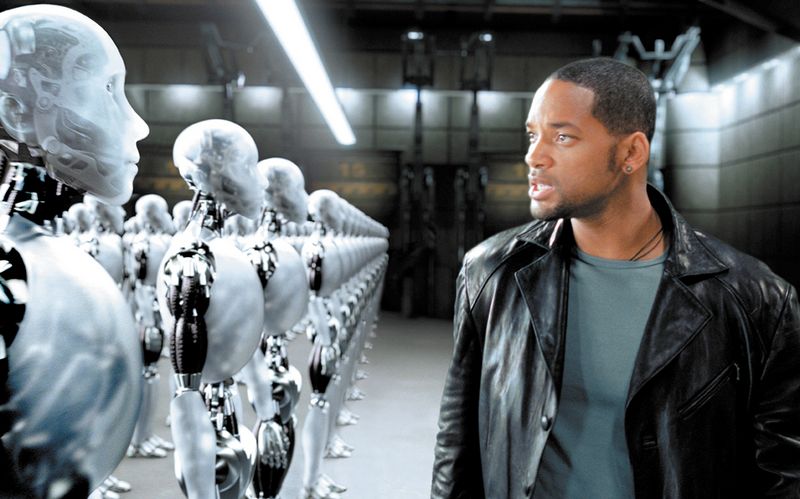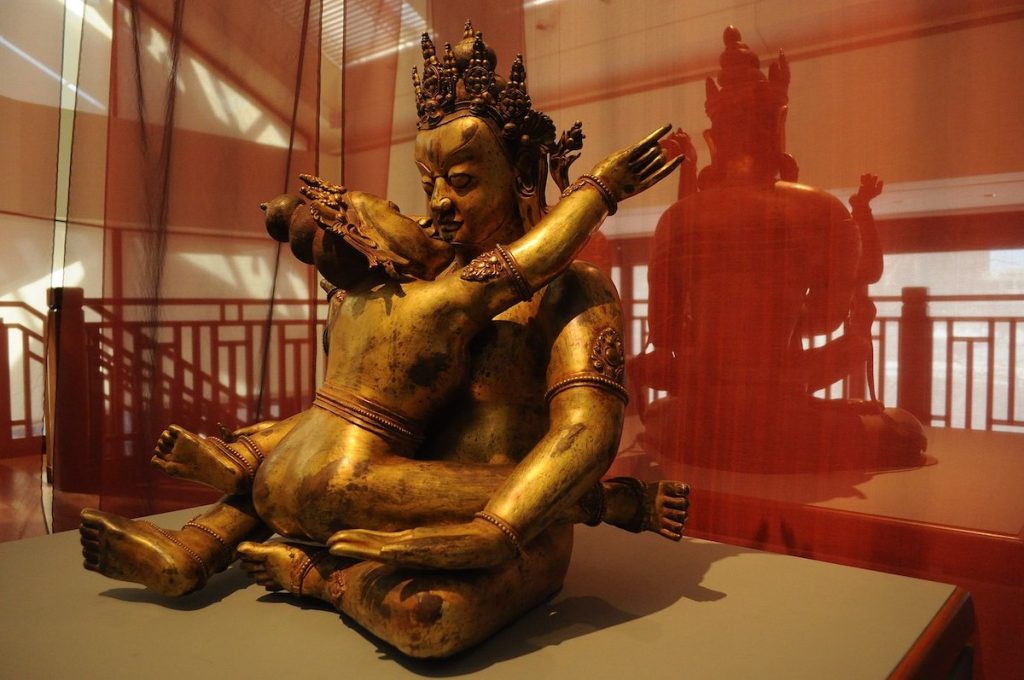Manjeera
Controversy seems to be the British-Indian artist Anish Kapoor’s middle name and the sculptor is yet again under the spotlight this month after the unveiling of his highly anticipated public sculpture in Manhatten. Resting at the foot of the Jenga Tower, this artwork looks as if it is being crushed under the massive weight of the skyscraper. I’m sure it has been carefully designed to sustain its presence in the streets of New York for a long time, but I cannot help but show my concern for this stainless-steel blob. The thing hasn’t even been named yet, with the naming ceremony being scheduled for spring; but it appears that New Yorkers have unanimously christened the piece “mini-bean”. The name makes sense as this piece was originally based on Anish’s Chicago Cloud Gate, arguably his most famous work. Alas, it appears that the ‘mini-bean’ does not live up to its grand expectations as both an artistic creation and a piece of public artwork.

Courtesy- Millennium Park Foundation.
The ‘mini-bean’ is estimated to have cost a whopping $10 million and was inaugurated on 3 February 2023 after years of delay in installation due to the Covid-19 pandemic. Anish’s artistic vision when it comes to his mirror sculptures has been clear; he wanted them to appear as if “no human hand” took part in the creation. The structure of Cloud Gate was intended to be an unnatural shape created by pure geometry that should perform to defy the materiality of man-made constructions. And indeed, Chicago’s Bean has a certain peculiar otherworldly charm about it as the massive stainless steel installment gives the impression that it has no seams between its metal components and the average viewer cannot discern its formulation that emerges out of complex technical and mechanical marvels. But the New York bean lacks the regality and the polished finish that characterise the original. Alex Greenberger of ArtNews who calls the mini-bean “an eyesore that no one asked for” reports that while Cloud Gate‘s steel plates are seamlessly welded together, the edges of the plates of the mini-bean are quite visible, breaking the distinct illusion that the piece aims to provide.
Compared to the Chicago version, which reflects the grand skyline of the metropolitan city, the mini-bean reflects a sad view of the street. The essence of the original comes from the uncanny reflection of the skyline, buildings, and people watching themselves melding together as they are seamlessly reflected on the distorted body of the structure. Sadly, the mini-bean offers much less due to its precarious position under the Jenga Tower and the grandest vision it can offer is that of the sidewalk.
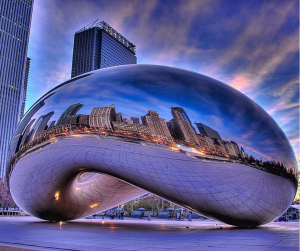
Courtesy- Millennium Park Foundation
The ‘mini-bean’ also feels much more synthetic; an iconic feature of the original bean was the space underneath the gigantic structure where tourists could walk underneath. This one is firmly attached to the ground and creates an impression of artificiality and the stainless metal surface touching the pavements does not produce an ephemeral image, but a rather disappointing one.
As the mini-bean was intended to be a public installment, this seems to be a bizarre place to put it, wedged under a luxury skyscraper in New York’s most expensive neighborhood; but a closer look unveils an even disturbing reality. We find out that this structure was always intended to be a part of the Jenga Tower, designed by the Pritzker Prize-winning architecture firm Herzog & de Meuron. This artwork was commissioned years ago with the role to serve as the cherry on top, so to speak, and complete the manifestation of this multi-million dollar luxury residence, and more importantly, fulfill the egos of the millionaires who live with the fetishistic idea of art. Lacking the essence of its original and Anish’s own artistic vision, the mini-bean makes a mockery of art as its construction only seems to please the rich landowners of Tribeca. Certainly, the real estate of the surrounding buildings will jack up as a result of this installation, intensifying the income-based property disparity that is plaguing New York.
This piece makes it clear that it is not a public artwork in its intention- it is a simple piece that has been reproduced to fulfil the desires of those who wish to own and possess art. It is not surprising that Anish Kapoor caters to this clientele, as he is also one of them, as it has been reported that the artist owns a condo in the Jenga Towers purchased for $13.5 million dollars. This is not an artwork created to demonstrate his vision, but it is a vanity project for those who have enough money to own an estate in the area. There has been outrage on Twitter by residents of the city, who argue that New York’s neighbourhood map does not need alternations like this and the city does not need Chicago’s most iconic landmark to define its landscape. I agree with this sentiment; the existence of this mercurial blob, especially at the feet of the Jenga, is a mere fetish that should not exist.
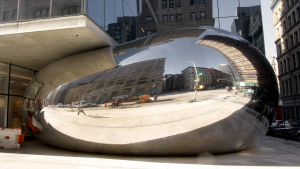
Courtesy- Designboom.
It is important to remember that while tourists are free to visit it and take selfies around the piece, the mini-bean is a privately funded structure, with its own security detail and barricades to boot. It has been pointed out that very few can catch a holistic glimpse of this artwork from street level; it is the residents of the Jenga tower who can take in the whole piece at its finest, looking down at it and the countless tourists swarming around it from their multi-million dollar residences.

